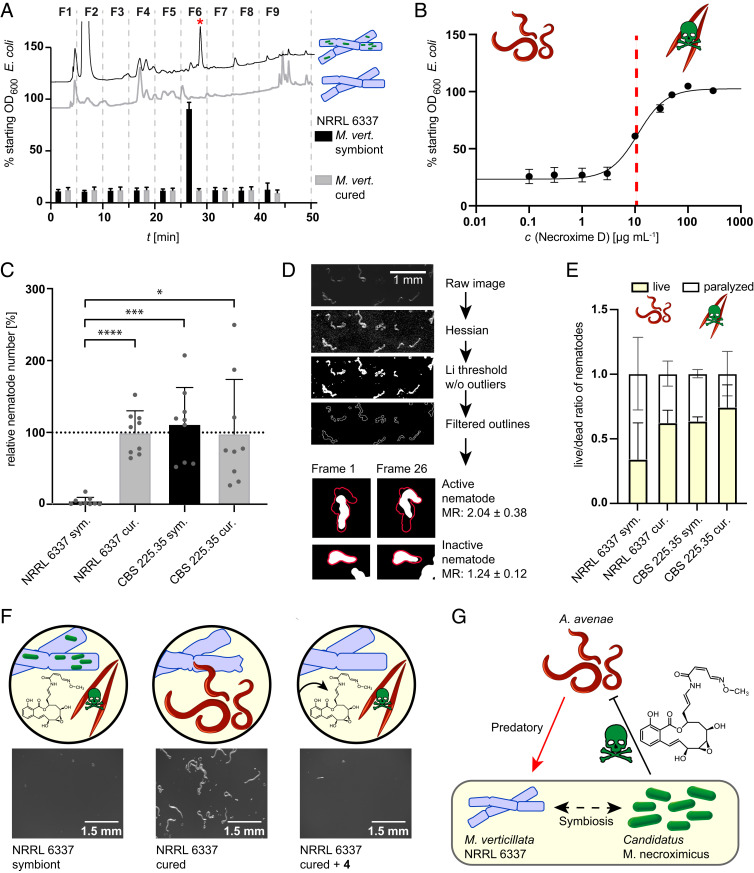Fig. 3.
Nematocidal activity of symbiont-derived toxins. (A) Viability assay of C. elegans in presence of extract fractions of symbiotic and cured M. verticillata NRRL 6337. HPLC profiles of extracts are shown with corresponding effect on nematodes, measured as effect on the E. coli optical density (OD). When nematode growth is impaired by the fraction, E. coli cells are not consumed, and thus the OD600 is not altered (error bars represent mean of three biological replicates). The red asterisk represents 4. (B) Toxicity screening of 4 against C. elegans. The red line marks IC50 at 11.3 µg ⋅ mL−1 (24.66 µM; 95% CI, 21.45 to 28.37 µM; error bars as mean of five biological replicates). (C) Nematode counts from propagation assay of M. verticillata and A. avenae cocultures. Bars represent relative nematode numbers compared to the mean of the nematode count from cured M. verticillata NRRL 6337 cultures. cur., cured; sym., symbiotic. *P < 0.02; ***P < 0.001; ****P < 0.0001. Data represent three biological replicates with three technical replicates each. (D) Workflow of image analysis and mathematical evaluation of A. avenae mobility in fungal–nematodal coincubations. Processing of time series is demonstrated by one time frame. Exemplary images of nematodes from two time frames (frame 1 and 26) are shown to illustrate differences in motility. Results of calculated mobility ratios (MR) were used for live or paralyzed/dead categorization. (E) Results of image analysis and mathematical quantification of nematode movement. Bars show ratio between moving/living nematodes and paralyzed/dead nematodes, which were harvested from cocultures of A. avenae with symbiotic M. verticillata NRRL 6337 cultures, cured NRRL 6337 cultures, or CSB 225.35 cultures. Numbers and error bars were calculated from minimal 176 worms from three biological replicates. (F) Stereomicroscopic images and schematic picture of chemical complementation assay with a magnitude of 25×. Sample of nematodes harvested from plates containing symbiotic, cured, or cured and with 4 chemically complemented M. verticillata NRRL 6337 cultures. (G) Schematic summary of tripartite interaction between fungal host, bacterial endosymbiont, and mycophagous nematodes.

